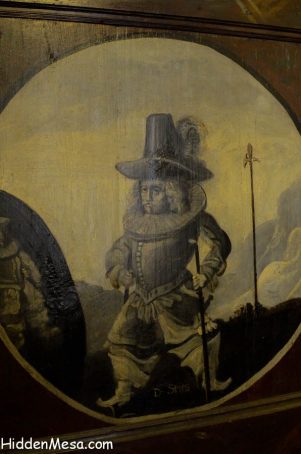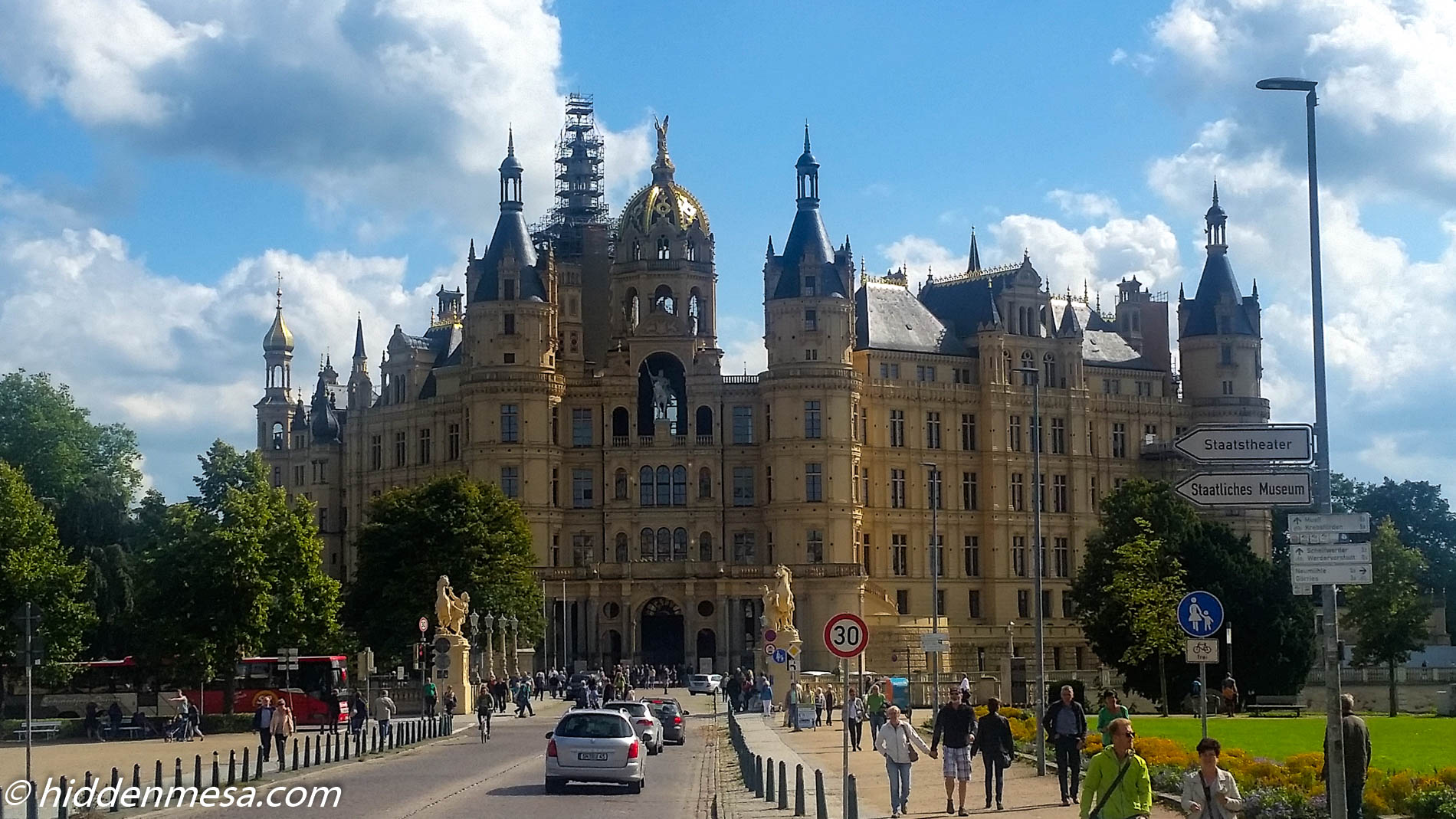We’ve talked about Schwerin before, and we’ve mentioned the iconic Schwerin Palace, but we’ve never given the Palace the attention it deserves. After all, it was Schwerin Palace that originally drew us to this northern German town in the first place.
Schwerin Palace sits on a small island in Lake Schwerin. It is, of course, near the town of Schwerin in northern Germany near the Baltic Sea. Our first visit here was during a Baltic Sea cruise aboard a Norwegian Cruise Lines ship. We stopped in Warnemünde for a day and caught a bus into Schwerin. Our first stop was the Palace where we did a walk through its interior and the grounds.
Like so many other buildings in Europe, Schwerin Palace has a rich and interesting history. While people have been living in the area for many thousands of years, the generally accepted year that the palace was established is 1160, when a famous medieval lord Henriech der Löwe (Henry the Lion), Duke of Bavaria and Saxony, conquered a group of Slavic tribes who had occupied the fortress of Schwerin since 960. As it is, Schwerin is one of the last true residence palaces to be built in Germany.
From 1945 through 1989 it was used as Mecklenburg’s parliamentary seat, an educational college, a museum of prehistory and early history, and a polytechnic museum. In 1990, after the reunification of East and West Germany, Schwerin Palace became the seat of the regional parliament of Mecklenburg-Western Pomerania, one of sixteen federal states in Germany. Extensive restoration work also began and continues to some extent today.
For us, as tourists, there’s a large area of the palace that’s open for tours. You can see re-created rooms as they probably were in the 15th century when royalty lived here. You can also see a regional parliament in action if they’re in session, but you’ll of course want to brush up on your German.

The ghost of Schwerin Castle, named Petermännchen, is said to be no more than four feet tall. One legend says that this little guy is a spirit servant of a pagan god. When the pagan god was driven out of Schwerin by Christianity, Petermännchen remained behind, refusing to leave his post.
There’s a ghost at Schwerin Palace called Petermännchen, or, Little Peterman. This good-natured spirit is said to be only about four feet tall. There’s a statue of him at the Palace. He’s described in a couple of ways. One is that he’s occasionally seen wandering the vaults and tunnels under the castle. He carries keys, unlocking doors as he goes along. Another legend says that he patrols the grounds with a lantern and a small sword or dagger, guarding the Palace against thieves. He rewards good behavior and plays pranks and tricks on others. He makes banging noises at night, and has been known to awaken sleeping guards to keep them from being punished.
In our wanderings around Germany, we’ve now made two stops at Schwerin Palace. Below you can see some of the images we brought back. You can also see an article we recently posted about Schwerin here along with a post about our favorite hotel in Schwerin, the Weinhaus Uhle.
Enjoy.









